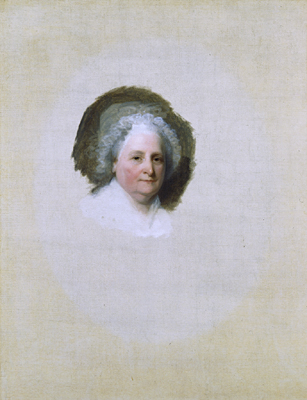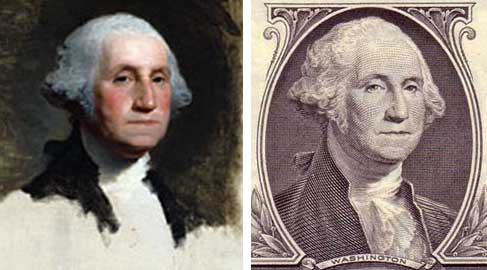

The engraving for George Washington on the $1 note is derived from Gilbert Stuart's "Athenaeum" portrait of George Washington in 1796. It is considered the most famous painting of the first president, but it was never finished. After Stuart painted his first portrait for Washington in 1794-1795, Martha Washington asked to have her own portrait done, as well as another one of the President. Intended for Mount Vernon after Washington's retirement, the portraits are known as the Athenaeum portraits because the Boston Athenaeum acquired them after Stuart's death. In these portraits, Washington faces left, and Martha faces slightly to the right, so the pair would be balanced.
 |  |
| Martha Washington by Gilbert Stuart, 1796 | George Washington by Gilbert Stuart, 1796 |
When Stuart began painting a portrait, he used muted tones of lights and darks, an "indistinct mass of light and shadows," showing the subject "as seen in the heel of the evening, in the gray of the morning, or a distance too great to discriminate features with exactness." In completing a portrait, he advised painters to "be bold and use the color freely, but let it be well mixed" with "no fuzzy edges, but liquid and all of one cast."
Some critics claim that Stuart made Washington appear too stern. But the artist always said he painted what he saw: "Nature as Nature cannot be exceeded, and as your object is to copy Nature, twere the hight of folly to look at any thing else to produce that copy." Stuart explained, "When I painted him, he had just had a set of false teeth inserted, which accounts for the constrained expression so noticeable about the mouth and lower part of the face."
The "Athenaeum" portrait of George Washington is the image used for the engraving on $1 notes.
 |
| Portrait flipped vertically and compared to engraving on $1 note |